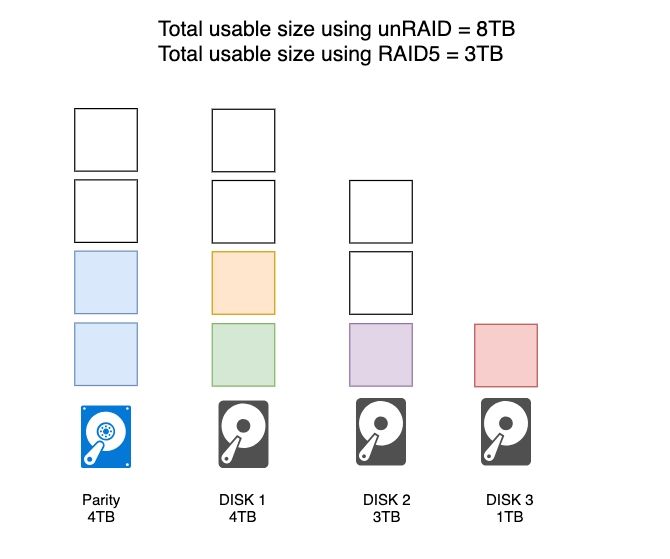

- #UNRAID SETUP SHARD DRIVE HOW TO#
- #UNRAID SETUP SHARD DRIVE MANUAL#
- #UNRAID SETUP SHARD DRIVE REGISTRATION#
- #UNRAID SETUP SHARD DRIVE SOFTWARE#
- #UNRAID SETUP SHARD DRIVE PLUS#
In openmediavault, I currently have ~6 TB of data with four 8TB drives and an assortment of 500 MB and 2TB drives.

Please fully read the Assigning Devices to the Array and Cache documentation before you initialize the array because you can lose your data if you’re not paying attention and start pushing buttons all willy-nilly. Now, on the Main tab, you will see all the slots available for drives.
#UNRAID SETUP SHARD DRIVE REGISTRATION#
You will be redirected to the tools/registration screen: First ExperienceĬlick the “Get License Key” button and it will automatically register it for you, no long registration forms or emails or your first born son… Assigning Drives Go to a different computer, open the web browser and navigate to (if you’re on a Mac use instead). The server is running and now it’s time to go to the webpage. Wait until you get to the end and see the CLI ask for Tower login, you’re done. Unraid will start headless and you’ll see a bunch of Linux and Unraid initialization output. You’ll see a boot menu for which option to choose, just let it make the first selection: Unraid OS (see Boot Mode Selector for descriptions of the options). It’s ShowtimeĪlright, it’s time to power up! Make sure the USB is plugged in ( see step 6 above) and power on the machine. If you have multiple USB 3.0 hubs, you can spread them out to get faster disk IO instead of putting all the work on one hub.
#UNRAID SETUP SHARD DRIVE MANUAL#
If you’re not sure, consult the machine’s manual to know which ports are managed by USB 3.0 Hubs. TIP – If you’re using USB for your NAS drives and not SATA, then make sure you plug them into USB 3.0 or 3.1 ports. ( Tip: Try and use a USB 2.0 port for the boot drive, this will save USB 3 ports for NAS drives).
#UNRAID SETUP SHARD DRIVE PLUS#
#UNRAID SETUP SHARD DRIVE SOFTWARE#
Next, download the USB Creator software from the Unraid Downloads page. Unraid is actually loaded into the system’s RAM during boot and runs from there, so there is very minimal boot disk IO. Clean out the contents of the drive and name it “Unraid”, this is going to be your boot drive. The first thing you’ll want to do is get a USB2 or USB3 thumb drive with at least 1GB capacity (USB2 is better).
#UNRAID SETUP SHARD DRIVE HOW TO#
This post is a step by step tutorial on how to take all the drives you’re using with openmediavault (OMV) and use them to setup a new Unraid system. This weekend, I took the plunge and captured every step for this tutorial so that you can see just how easy and not scary as it first appears. I wish I had done this sooner, it was really easy… literally plug and play (with a couple button clicks to confirm I wanted to format the drive 😊). However, I got scared off each time when I read the setup instructions and never took the next step to implement it. I have stopped by the Unraid website several times, longing for those the features on offer… like Charlie looking into Willy Wonka’s front gates imagining the wonders that lay beyond.


 0 kommentar(er)
0 kommentar(er)
